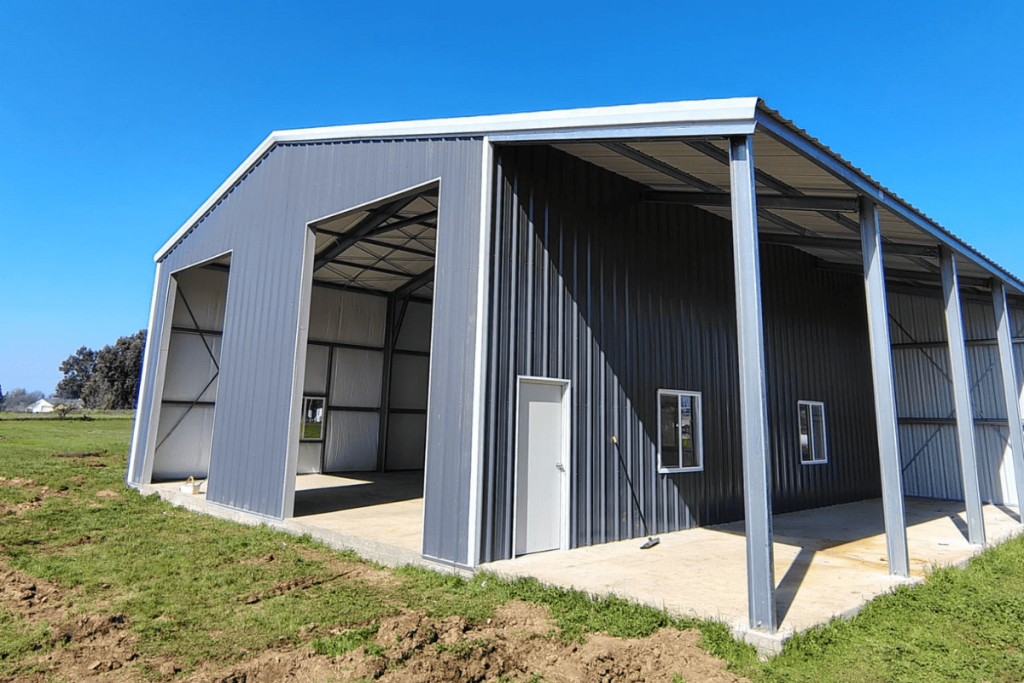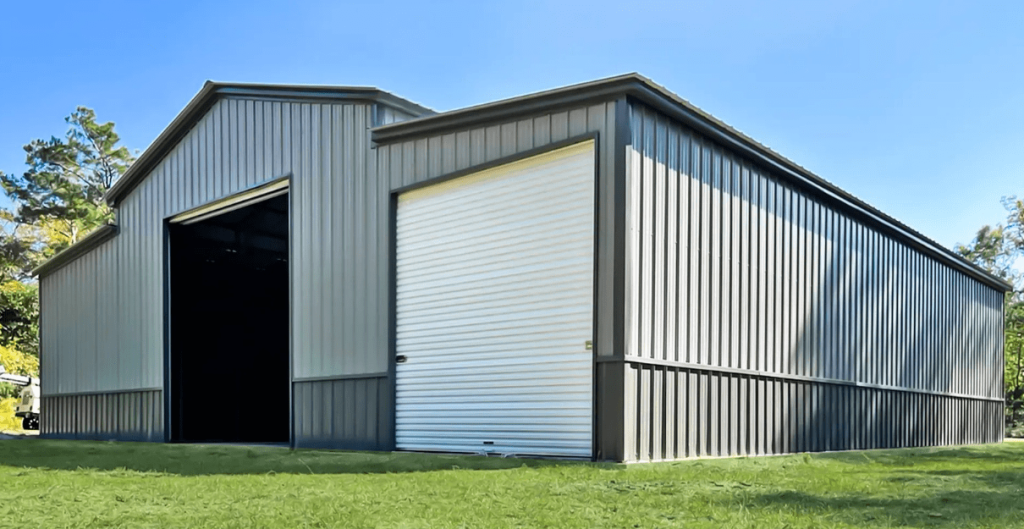What Makes a High-Quality Steel Building? Materials, Engineering, and Craftsmanship

In today’s construction landscape—whether you’re a homeowner seeking extra space or a business investing in infrastructure—the value of a high-quality steel building cannot be overstated. While budget-friendly options exist, cutting corners often leads to compromises in safety, durability, and long-term value. This blog dives deep into what separates a premium steel building from cheaper alternatives, focusing on material specifications, structural engineering, protective coatings, and certifications.
By the end of this complete guide, you’ll have the insight you need to make an informed decision when investing in a steel structure—whether it’s for agricultural storage, commercial use, residential expansion, or industrial applications.
Introduction to Steel Buildings
Steel buildings have become the go-to solution for a wide variety of applications—from garages, barns, and workshops to industrial warehouses, commercial buildings, and even residential homes. Their popularity lies in their strength, cost-efficiency, adaptability, and relatively quick construction time.
But as demand grows, so does the number of suppliers offering low-cost steel building kits that often sacrifice quality to achieve lower pricing. Buyers must understand that “steel building” is not a one-size-fits-all category—quality varies drastically.
Material Specifications: Not All Steel Is Equal
The cornerstone of any steel building is, unsurprisingly, the steel itself. But what many buyers don’t realize is that steel quality varies dramatically. Here’s what to look for:
Steel Grade
High-quality buildings are constructed using structural-grade steel, such as ASTM A36 or A572, which provide high yield strength and elongation capacity. Lower-grade steel or recycled scrap may be cheaper, but it’s often more brittle and prone to warping or corrosion.
American vs. Imported Steel
Steel sourced in the U.S. typically adheres to more rigorous quality and environmental standards. Some cheaper kits use imported steel that doesn’t meet the same tensile strength or rust resistance standards, leading to structural failures over time.
Galvanized vs. Galvalume
Both are zinc-based coatings that help prevent rust, but Galvalume adds aluminum, which increases its resistance to corrosion in many environments, particularly for roofing and siding.
Steel Thickness (Gauge)
The thickness of the steel used in structural components and panels matters immensely. A high-quality steel building often uses 12- or 14-gauge steel for frames and 26- or 24-gauge panels. Thin panels (29-gauge or higher) are often used in cheap buildings and can buckle easily under stress or weather conditions.
Engineering: The Backbone of Structural Integrity
A premium steel building is never just “assembled”—it’s engineered.
Load Calculations
Proper engineering accounts for snow loads, wind loads, seismic activity, and even regional temperature swings. The building should be designed and stamped by a licensed structural engineer based on your local building code requirements.
Clear Span Capabilities
High-quality engineering allows for larger clear-span spaces (i.e., open interiors with no support columns). This is essential for warehouses, airplane hangars, and large-scale event centers.
Redundancy and Reinforcement
Top-tier structures often include bracing systems, web trusses, and rigid frame connections that provide added stability during natural disasters or high wind events.
Fabrication & Craftsmanship
Precision Cuts and Welds
Premium steel buildings are fabricated using laser-cutting and robotic welding techniques that ensure precision and reduce the risk of misalignment during installation.
Tolerances and Fit
Parts that are fabricated with tight tolerances lead to easier assembly, better weather sealing, and longer-term durability. Poorly fabricated buildings may suffer from misaligned panels, gaps, and leaks.
Factory Pre-Assembly
Some high-end suppliers pre-assemble complex components (like trusses or modular walls), minimizing field labor and reducing installation errors.
Protective Coatings and Corrosion Resistance
Corrosion is the silent killer of metal buildings. Superior coatings are crucial to prolonging the lifespan of your investment.
Zinc Coatings
Corrosion is the silent killer of metal buildings. Superior coatings are crucial to prolonging the lifespan of your investment.
Powder Coating vs. Paint
Powder-coated finishes are more durable, UV-resistant, and less prone to peeling or chipping compared to traditional paint.
Specialty Coatings for Harsh Environments
Coastal, agricultural, or industrial environments require buildings with advanced protective coatings like epoxy or ceramic-based sealants to resist corrosion from salt, ammonia, or chemicals.
Certification Standards and Compliance
A high-quality steel building should carry the proper certifications and documentation to prove its worth.
International Building Code (IBC) Compliance
Your building must meet IBC standards, which regulate everything from snow load tolerance to energy efficiency and accessibility.
MBMA and AISC Membership
Engineer-Stamped Drawings
All structural plans should be stamped by a licensed engineer in your state. This is crucial for getting permits and insurance.
Customization and Design Flexibility
One of the main advantages of high-quality steel buildings is their adaptability.
Custom Dimensions
You should be able to specify the exact length, width, height, and pitch that meets your needs, rather than choose from limited preset sizes.
Functional Layouts
A good manufacturer will offer layouts designed for your specific use—whether you need overhead doors for vehicle storage, skylights for natural lighting, or mezzanines for added office space.
Aesthetic Options
Want a stucco finish or a wood-look façade? Quality providers offer design flexibility that includes colored paneling, architectural trim, decorative elements, and more.
Installation and On-Site Precision
Professional Installation
The best manufacturers either offer in-house installation or partner with certified contractors trained to assemble their systems. Poor assembly voids warranties and creates risks.
Pre-Engineered Kits
These come with every nut, bolt, bracket, and instruction guide tailored to your design, minimizing on-site guesswork and errors.
Tight Weather Seals
Flashing, gaskets, and sealing tapes are often overlooked but critical for preventing leaks and water damage in the long term.
Warranties and Longevity
A high-quality steel building should come with solid warranties that demonstrate confidence in its longevity.
Structural Warranty
Look for a minimum of 20 to 40 years on the frame structure. Some providers offer lifetime warranties on framing.
Paint and Finish Warranty
Panels should be covered against fading, chipping, and rust for at least 25 years.
Workmanship Warranty
If the provider offers installation, check for a 1- to 5-year workmanship warranty covering the labor and assembly process.
Common Pitfalls with Cheap Alternatives
Buying cheap often leads to costly mistakes. Here’s what typically goes wrong:
Thinner steel that buckles under snow or high winds
Inferior coatings that rust within years
Loose-fitting panels that lead to water intrusion
No structural certification, making it impossible to get permits
Hidden fees for essentials like bolts, fasteners, or doors
No warranty or poor post-purchase support
A cheap steel building might save you upfront, but the long-term maintenance, safety risks, and replacement costs will far outweigh the initial discount.
Investing in a Steel Building That Lasts

A high-quality steel building is not just a purchase—it’s an investment in your property, your operations, and your peace of mind. The difference lies in every detail: the grade of steel, the precision of the fabrication, the integrity of the engineering, and the reliability of the warranty.
Whether you’re building a commercial warehouse, an aircraft hangar, a backyard garage, or a custom office space, don’t let price alone dictate your decision. Instead, evaluate the full picture—materials, engineering, coatings, certifications, and customer support. Make your investment once, and make it count.
Ready to design your high-quality steel building? Contact Prime Manufacturing today for a custom quote and 3D design consultation.
